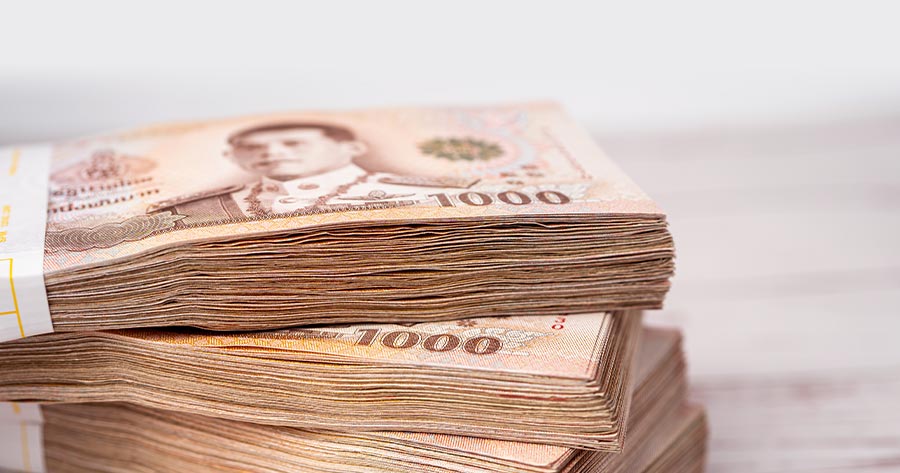Kiatnakin Phatra Securities (KKPS) stated that the Thai baht (THB) has surprisingly become very strong compared to other currencies. This has happened even though Thailand’s factories are not doing as well as they could, and the interest rates in Thailand are much lower than in the United States, creating a wider gap between the two currencies. Usually, these kinds of economic factors would lead to a weaker currency.
Experts believe that Thailand’s export competitiveness has become worse, and not much new investment flows have come into Thailand. Historically, when one country has much lower interest rates than another, money tends to flow out of the country with lower rates, which usually makes its currency weaker. The amount of money Thailand makes from tourists visiting the country is not enough to explain why the baht is so strong on its own. This suggests that what’s actually happening in the currency market is different from what economic textbooks would predict.
Kiatnakin Phatra stated that one important reason behind this baht appreciation is because the Japanese yen has become weak. The way the baht’s overall strength is measured (called the nominal effective exchange rate or NEER) means that when the Japanese yen goes down in value, it makes the Thai baht look artificially stronger. So, even if Thailand’s own economic situation does not fully support a strong baht, the weakness of other currencies like the yen can make it appear that way. This shows how changes in other countries’ currencies can hide the real status of a local currency’s strength.
The value of the Thai baht is also very sensitive to changes in the global price of oil because Thailand buys more energy from other countries than it sells, which creates a trade deficit in energy. This means that if oil prices go up, it really affects the baht.
At the same time, the baht’s value tends to move in a similar way to the price of gold. This is because of how gold is traded in Thailand and the flow of money related to it. On top of all this, whether the US dollar is strong or weak adds another layer of difficulty in predicting what will happen to the baht.
Recently, there has been a consistent positive figure in Thailand’s financial records under “errors and omissions” in the balance of payments (BOP). This suggests that there’s money coming into Thailand that is not being officially recorded or tracked properly. These hidden or underreported inflows of money could be another reason why the baht is getting stronger. However, if the baht stays too strong for too long because of these untracked flows, it could harm Thailand’s manufacturing industry because their goods would become more expensive for buyers in other countries. This situation is similar to a problem called “Dutch disease,” which can cause long-term worries for the government and investors.
In the past, the Bank of Thailand (BOT) used to try and control the strength of the baht by buying and selling foreign currencies. This was a way to build up their foreign currency reserves. However, nowadays, the BOT seems more willing to let the market decide the baht’s value and mostly steps in only when there are big and sudden changes in its value to make things more stable.
The BOT’s approach shows the difficulty of what’s known as the “impossible trinity”. This idea highlights that a country can’t easily have all three of these things at the same time: control over its own interest rates, allow money to flow freely in and out of the country, and have a fixed or very stable exchange rate. They often have to choose two out of the three.
Looking ahead, Kiatnakin Phatra stated that there are reasons to think that the baht might become weaker in the near future. This is because fewer tourists during the low season, dividend repatriation and potential US tariffs on goods coming from Thailand. Kiatnakin Phatra pointed out that external factors-particularly the US macro, the dollar and commodity prices-will likely drive baht volatility.





